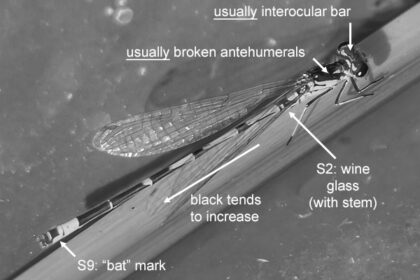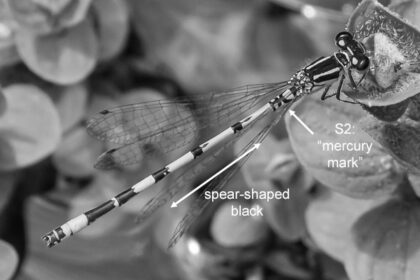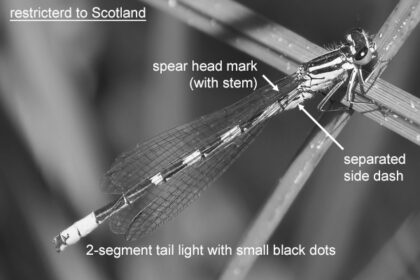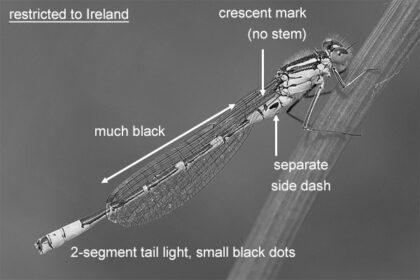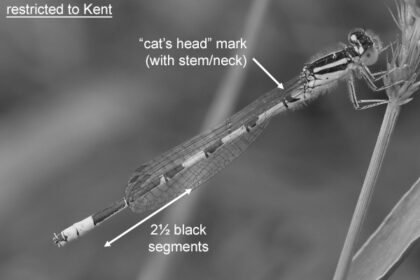So you have a male Coenagrion species of which there are 6 in the UK.
Only one of these, the Azure Damselfly (Coenagrion puella) is truly common and widespread in Britain and Ireland. The Variable Damselfly (Coenagrion pulchellum) is widespread in Ireland but has a patchy, widely disjoint distribution in Britain. These are the “terrible twins” because variations can cause them to look very alike.
The remaining 4 Coenagrion species have very patchy/localized distribution.
On the GB Red List as “endangered“, with a distribution restricted to southern England, southern Wales and Anglesey, is the Southern Damselfly (Coenagrion mercuriale), named after the so-called “Mercury mark” on S2.
Also on the GB Red List as “endangered“, this is restricted to a few sites in eastern Scotland. If you have one of these you probably went looking for it and know what it is.
Sadly missing from my personal catalogue, for this image, which I have modified, I am indebted to Rudy Offereins, CC BY-SA 4.0, via Wikimedia Commons.
Rarest and most restricted, being found only on a few sites in Kent, is the Dainty Damselfly (Coenagrion scitulum). The male is very distinctive compared to its congeners with its 2½ black abdominal segments.
If you have one of these, you probably went looking for it and know what you have.


